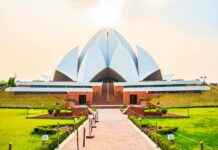This article provides a comprehensive guide for Indian New Yorkers, exploring the diverse neighborhoods of New York City and offering insights on culture, cuisine, and community resources.
Understanding New York City’s Neighborhoods
New York City is a vibrant tapestry of neighborhoods, each with its own unique flavor and cultural significance. From the bustling streets of Manhattan to the serene parks of Queens, understanding these neighborhoods is crucial for anyone looking to settle in the city. Neighborhoods like Jackson Heights and Flushing are well-known for their large Indian communities, where cultural festivals, restaurants, and shops flourish. These areas provide not only a sense of belonging but also a connection to Indian traditions and lifestyles.
Each neighborhood is structured around its own history and demographic composition. For instance, Little India in Jackson Heights is filled with Indian grocery stores, clothing boutiques, and authentic restaurants that serve traditional dishes. This cultural enclave allows Indian New Yorkers to maintain their heritage while integrating into the broader NYC community.
Top Neighborhoods for Indian New Yorkers
When it comes to thriving Indian communities, certain neighborhoods stand out. Jackson Heights is often regarded as the heart of the Indian diaspora, featuring numerous Indian restaurants, shops, and cultural events. Another notable area is Flushing, which, while primarily known for its Chinese community, also hosts a significant number of Indian residents and businesses.
- Jackson Heights: Famous for its diverse Indian cuisine, including South Indian, North Indian, and Indo-Chinese options.
- Flushing: Offers a mix of Indian and Asian cultures, with many grocery stores catering to Indian tastes.
- East Elmhurst: A quieter neighborhood with a growing Indian population and convenient access to public transportation.
Public Transportation: Getting Around NYC
Understanding the subway system is essential for navigating New York City efficiently. The NYC Subway is one of the most extensive in the world, providing access to almost every neighborhood. For Indian New Yorkers, knowing which subway lines connect to key areas like Jackson Heights and Flushing can save time and enhance mobility.
In addition to the subway, buses are a reliable way to travel, especially for those who may not be near a subway station. The MTA offers various routes that can take you to grocery stores, community centers, and cultural events. Familiarizing yourself with the MetroCard system will also make commuting easier and more economical.
Cultural Festivals and Events
New York City is home to numerous cultural festivals that celebrate the rich heritage of its Indian community. Events like the Diwali Festival in Jackson Heights and the Holi Festival in various parks attract thousands of participants each year. These celebrations not only allow Indian New Yorkers to connect with their roots but also invite the broader community to join in the festivities.
Participating in these festivals can be an excellent way to meet new people and build a sense of community. Many organizations also host smaller events throughout the year, such as dance performances, art exhibitions, and cooking classes that highlight Indian culture.
Indian Grocery Stores and Restaurants
Finding familiar foods is essential for many Indian New Yorkers. Neighborhoods like Jackson Heights and Flushing boast a plethora of grocery stores that offer authentic Indian ingredients. Stores such as Patel Brothers and Apna Bazar provide everything from spices to fresh produce, making it easy to prepare traditional meals at home.
In terms of dining out, the options are endless. Restaurants like Dhaba and Chola serve up delicious Indian cuisine that caters to a variety of tastes. Additionally, many eateries offer vegetarian and vegan options, reflecting the dietary preferences of a significant portion of the Indian community.
Community Centers and Resources
Community centers play a vital role in supporting Indian New Yorkers. Organizations such as the Indian American Cultural Council and the South Asian Youth Action provide resources ranging from cultural education to job placement services. These centers often host workshops, language classes, and social events that foster a sense of belonging and community engagement.
For newcomers, these resources can be invaluable in navigating life in New York City. They provide information on legal assistance, healthcare services, and social support networks, helping individuals and families integrate into their new environment.
Real Estate Insights: Finding a Home
Choosing the right neighborhood involves understanding the real estate market. Indian New Yorkers often seek areas with a strong community presence and access to cultural resources. Renting in neighborhoods like Jackson Heights and Flushing can be more affordable compared to Manhattan, while still providing a rich cultural experience.
It’s essential to research rental prices and housing options, as they can vary significantly from one neighborhood to another. Engaging with local real estate agents who understand the needs of the Indian community can also help in finding the perfect home.
Networking and Socializing Opportunities
Building a social network is crucial for newcomers. Various cultural groups and social events tailored for Indian New Yorkers provide excellent opportunities for networking. Organizations often host meet-and-greet events, cultural workshops, and recreational activities that encourage social interaction.
Joining local clubs or participating in community events can help newcomers establish friendships and support systems, making the transition to life in New York City smoother.
Education and Schools: A Family Guide
For families, education is a priority. New York City offers a diverse range of educational options, including public, private, and charter schools. Many schools have programs that celebrate cultural diversity and promote inclusivity, making them ideal for Indian families.
Researching schools in neighborhoods with significant Indian populations can provide insights into the educational resources available, including language support and cultural programs. Engaging with other parents in the community can also lead to valuable recommendations and insights.
Healthcare Services: Finding Support
Accessing healthcare is essential for any resident. Indian New Yorkers can find healthcare services that cater to their cultural needs. Many hospitals and clinics in neighborhoods like Jackson Heights and Flushing have staff who speak multiple languages, including Hindi and Punjabi, ensuring effective communication.
Additionally, community health programs often focus on providing culturally sensitive care, addressing specific health concerns prevalent within the Indian community.
Employment Opportunities: Job Market Insights
Understanding the job market is crucial for Indian New Yorkers. Industries such as technology, healthcare, and hospitality offer numerous employment opportunities. Networking events and job fairs tailored to the Indian community can also provide valuable connections and insights into job openings.
Additionally, many organizations offer resources for job seekers, including resume workshops and interview preparation sessions, helping newcomers navigate the job market successfully.
Legal Resources and Immigration Support
Navigating legal matters can be challenging, especially for newcomers. Various organizations provide legal resources and immigration support services tailored to the needs of Indian New Yorkers. This includes assistance with visa applications, green card processes, and understanding local laws.
Engaging with community organizations can provide valuable information and support, ensuring that individuals have access to the resources they need to thrive in their new environment.
Safety and Community Engagement
Feeling safe in your neighborhood is paramount. Indian New Yorkers can engage with local community organizations and neighborhood watch programs to foster a sense of safety and belonging. Participating in community events can also help residents build relationships with their neighbors, creating a supportive network.
Understanding local safety resources, such as police precincts and community centers, can enhance personal safety and promote a sense of community engagement.
Understanding New York City’s Neighborhoods
New York City is often described as a vibrant tapestry woven from its diverse neighborhoods, each boasting its own distinct identity and cultural significance. This section delves into the intricate structure of these neighborhoods and the profound impact they have on the lives of residents.
- Historical Significance: Many neighborhoods in New York have rich histories, often reflecting the waves of immigration that shaped them. For instance, neighborhoods like Chinatown and Little Italy are testaments to the cultural heritage of Chinese and Italian communities, respectively. The architecture, festivals, and local businesses serve as reminders of their historical roots.
- Community and Identity: Each neighborhood fosters a sense of belonging among its residents. For many, it is not just about living in a place, but being part of a community that shares similar cultural values and traditions. Areas like Jackson Heights in Queens are known for their multicultural environment, where Indian, Colombian, and Bangladeshi cultures intersect, creating a rich communal experience.
- Economic Impact: Neighborhoods also play a crucial role in the city’s economy. Areas with a strong cultural presence often become hubs for specific cuisines and businesses, attracting both locals and tourists. For example, Astoria is renowned for its Greek restaurants and cafes, while Flushing is celebrated for its authentic Asian dining options.
- Urban Planning and Development: The structure of neighborhoods is influenced by urban planning and development policies. Some areas, such as Williamsburg in Brooklyn, have undergone significant gentrification, leading to a shift in demographics and economic activities. This transformation often sparks debates about housing affordability and community displacement.
Moreover, neighborhoods are often characterized by their unique architecture and public spaces. The Brownstones of Brooklyn and the Art Deco buildings in Manhattan illustrate the architectural diversity that defines the city. Parks, such as Central Park and Prospect Park, serve as communal gathering spaces, enhancing the quality of life for residents.
In addition to cultural and economic factors, the social dynamics within neighborhoods are vital. Community organizations and local initiatives often emerge to address the specific needs of residents, providing resources and support. For instance, immigrant communities frequently establish cultural centers that offer language classes, legal assistance, and social services, helping newcomers integrate into their new environment.
Understanding the neighborhoods of New York City goes beyond mere geography; it involves recognizing the stories, struggles, and triumphs of the people who inhabit them. By exploring these unique areas, residents and visitors alike can appreciate the rich cultural mosaic that makes New York City a truly remarkable place to live and explore.
Top Neighborhoods for Indian New Yorkers
Exploring the vibrant neighborhoods of New York City is essential for Indian New Yorkers looking to connect with their roots and engage with a thriving community. Each neighborhood offers a unique blend of culture, cuisine, and social opportunities that resonate deeply with the Indian diaspora. Below are some of the top neighborhoods where Indian culture flourishes:
- Jackson Heights, Queens: Known as the heart of the Indian community in New York City, Jackson Heights boasts a rich tapestry of Indian culture. The area is filled with authentic Indian restaurants, grocery stores, and cultural shops. Events such as the Diwali Festival attract thousands, showcasing traditional music, dance, and cuisine. The diversity here is palpable, with residents from various regions of India contributing to the neighborhood’s vibrant atmosphere.
- Flushing, Queens: While Flushing is often recognized for its Chinese community, it also has a significant Indian presence. The neighborhood features a variety of Indian restaurants and shops, particularly along Roosevelt Avenue. The annual Flushing Diwali Mela brings together the community to celebrate Indian culture through food, performances, and family-friendly activities.
- Staten Island: Staten Island may not be the first place that comes to mind when thinking of Indian neighborhoods, but it has a growing Indian community. With several Indian grocery stores and restaurants, it offers a quieter environment for families. The Indian Cultural Society hosts events that promote cultural awareness and community bonding.
- Manhattan’s Little India: Located in the East Village, this area is home to a variety of Indian restaurants, shops, and cultural institutions. The annual India Day Parade is a highlight, celebrating India’s independence and showcasing the rich culture of the Indian community through colorful floats and performances.
- Jamaica, Queens: Jamaica is another neighborhood with a growing Indian population. This area features several Indian restaurants and is known for its vibrant street life. Community events often celebrate Indian festivals, providing residents with a sense of belonging and cultural pride.
Each of these neighborhoods not only offers a taste of India through its food and festivals but also serves as a hub for social interactions and community support. Indian New Yorkers can find cultural resources, support networks, and a sense of home in these vibrant areas. Whether you are seeking authentic cuisine or cultural celebrations, these neighborhoods provide a welcoming environment that resonates with the Indian experience.
It is essential for newcomers to explore these neighborhoods, engage with the community, and participate in local events. This involvement not only enriches personal experiences but also strengthens the fabric of the Indian community in New York City.
Public Transportation: Getting Around NYC
Navigating the bustling streets of New York City can be a daunting task, especially for newcomers. However, understanding the city’s public transportation system is essential for Indian New Yorkers looking to explore their new home efficiently. This section will delve into the various modes of transportation available, including the subway, buses, and alternative transit options, ensuring you have all the information needed to travel seamlessly.
Understanding the Subway System
The New York City Subway is one of the largest and most extensive transit systems in the world. With over 470 stations and 27 subway lines, it connects all five boroughs, making it a reliable option for daily commuting and exploring. The subway operates 24 hours a day, providing flexibility for those who work unconventional hours.
- MetroCard: To ride the subway, you will need a MetroCard, which can be purchased at vending machines in subway stations. You can choose between pay-per-ride or unlimited ride options, depending on your travel needs.
- Subway Etiquette: Familiarizing yourself with subway etiquette is important. Always allow passengers to exit before boarding, and keep your voice down to maintain a respectful environment.
- Apps and Resources: Utilize apps like Citymapper or the MTA’s official app for real-time updates and directions. These tools can help you plan your routes effectively.
Buses: An Alternative Transit Option
In addition to the subway, NYC boasts an extensive bus network that covers areas not serviced by trains. Buses are a great option for short distances or when traveling to neighborhoods that are not directly accessible by subway.
- Bus Routes: Buses are marked with a letter or number, and you can find route maps at bus stops. Pay attention to the signage to ensure you’re on the right bus.
- Accessibility: Most buses are equipped with wheelchair ramps, making them accessible for all riders. Additionally, the MTA provides audio and visual announcements for stops.
- Transfers: You can transfer between buses and subways for free within a two-hour window when using a MetroCard, allowing for greater flexibility in your travels.
Other Transit Options
Beyond the subway and buses, there are several other transit options available in NYC:
- Ferries: NYC Ferry offers scenic routes across the East River and Hudson River, providing a unique way to see the city while commuting. Ferries are a great option for those living in waterfront neighborhoods.
- Ride-Sharing Services: Services like Uber and Lyft are widely available, offering convenience for those who prefer a more direct mode of transportation. Keep in mind that surge pricing can apply during peak hours.
- Biking: For the more adventurous, NYC has a bike-sharing program called Citi Bike. With numerous docking stations throughout the city, biking can be a fun and efficient way to get around.
In conclusion, understanding the public transportation system in New York City is vital for navigating this vibrant metropolis. By utilizing the subway, buses, and other transit options, Indian New Yorkers can explore their new environment with ease and confidence. Remember to stay informed and plan your routes ahead of time to make the most of your travel experience.
Cultural Festivals and Events
New York City is renowned for its diverse cultural landscape, and among its many vibrant communities, the Indian culture stands out with a rich tapestry of traditions, festivals, and celebrations. As an Indian New Yorker, you have the opportunity to immerse yourself in a variety of cultural festivals that not only celebrate heritage but also foster a sense of community. This section highlights significant events that honor Indian culture, providing insights on when and where to participate.
Throughout the year, New York City hosts a plethora of festivals that celebrate Indian culture. Some of the most notable include:
- Diwali Festival: Often referred to as the Festival of Lights, Diwali is celebrated with great enthusiasm in NYC. The festival usually takes place in October or November, featuring vibrant parades, cultural performances, and traditional Indian cuisine. Locations like Times Square and various community centers host events that draw large crowds, making it a perfect opportunity to connect with fellow Indian New Yorkers.
- Holi Festival: Known as the Festival of Colors, Holi is celebrated in March. This joyous occasion involves throwing colored powders, dancing, and enjoying festive foods. Events are often organized in parks and community spaces, creating a lively atmosphere that embodies the spirit of togetherness.
- Indian Independence Day Parade: Held in August, this parade is a grand celebration of India’s independence. It features floats, cultural performances, and a showcase of Indian pride. The parade typically takes place along Madison Avenue, attracting thousands of attendees, making it a significant event for the Indian community.
Engaging in these festivals is not just about celebrating; it’s also an opportunity to learn and connect. Many events feature workshops, cooking demonstrations, and cultural exhibitions that allow participants to dive deeper into Indian traditions. Here are some tips on how to make the most of these cultural gatherings:
- Plan Ahead: Check event schedules and plan your visit accordingly. Some festivals may require prior registration or tickets, especially for workshops and performances.
- Volunteer: Many festivals seek volunteers to help with organizing events. This is a great way to meet new people, contribute to the community, and gain firsthand experience of the cultural festivities.
- Network: Use these events as a platform to meet other Indian New Yorkers. Exchange contact information and engage in conversations to build a supportive network.
Staying informed about upcoming festivals is essential for active participation. Here are some reliable sources to keep you updated:
- Community Centers: Local community centers often post event calendars and flyers regarding cultural festivals.
- Social Media: Follow Indian cultural organizations and community groups on platforms like Facebook and Instagram for real-time updates and event announcements.
- Local Newspapers: Publications that focus on the Indian community frequently feature articles about upcoming festivals and events.
In summary, New York City offers a vibrant array of cultural festivals that celebrate the rich heritage of the Indian community. By participating in these events, you not only honor your culture but also strengthen your ties within the community. Whether it’s through colorful celebrations of Holi or the illuminating festivities of Diwali, there’s always a chance to engage, learn, and connect.
Indian Grocery Stores and Restaurants
For many Indian New Yorkers, the availability of familiar foods is not just a matter of taste; it is a vital connection to their culture and heritage. This section will explore popular grocery stores and restaurants that cater to Indian tastes, reinforcing the sense of community among Indian residents in New York City.
New York City boasts a variety of grocery stores that specialize in Indian foods and ingredients. These stores are essential for those seeking to prepare traditional Indian dishes at home. Here are some of the most popular Indian grocery stores:
- Patel Brothers: Located in several neighborhoods, Patel Brothers is one of the largest Indian grocery chains in the United States. They offer a wide range of products, including spices, lentils, and frozen foods.
- Apna Bazar: Known for its fresh produce and authentic Indian products, Apna Bazar has become a go-to destination for many Indian families. Their selection includes everything from fresh vegetables to specialty snacks.
- Spice Land: This store is celebrated for its extensive range of spices and herbs, essential for Indian cooking. They also carry a variety of packaged goods and sweets.
- Subzi Mandi: A favorite among locals, Subzi Mandi specializes in fresh vegetables and fruits, many of which are staples in Indian cuisine. Their prices are competitive, making it a popular choice for budget-conscious shoppers.
In addition to grocery stores, New York City is home to numerous restaurants that serve authentic Indian cuisine. These establishments not only provide delicious meals but also serve as cultural hubs for the Indian community. Here are some notable restaurants:
- Junoon: A Michelin-starred restaurant, Junoon offers a fine dining experience with a menu that features regional Indian dishes. The ambiance and presentation make it a perfect spot for special occasions.
- Chote Nawab: Known for its home-style cooking, Chote Nawab provides a cozy atmosphere and a menu filled with traditional Indian dishes. Their biryanis and curries are highly recommended.
- Jackson Diner: This restaurant is famous for its extensive buffet and casual dining experience. It’s a great place to try a variety of dishes at an affordable price.
- Dhaba: With a focus on North Indian cuisine, Dhaba offers a vibrant dining experience with flavorful dishes like butter chicken and paneer tikka. Their street food options are also a hit among patrons.
Finding these grocery stores and restaurants not only satisfies culinary cravings but also fosters a sense of belonging among Indian New Yorkers. They serve as gathering places where individuals can share experiences, celebrate festivals, and maintain cultural traditions. The availability of familiar foods strengthens community bonds, making it easier for newcomers to feel at home in this diverse city.
Community Centers and Resources
Community centers serve as essential hubs for Indian New Yorkers, providing a wealth of resources and support that cater specifically to the needs of the community. These centers not only foster cultural connections but also offer practical assistance to newcomers navigating life in the bustling city. This section delves into the various resources available, including cultural organizations and support networks, highlighting their significance in enriching the lives of Indian residents in New York.
One of the primary functions of community centers is to create a sense of belonging among Indian New Yorkers. They host numerous events that celebrate Indian culture, such as Diwali festivals, Holi celebrations, and other traditional gatherings. These events not only provide opportunities for socializing but also serve to educate the wider community about Indian heritage, fostering a spirit of inclusivity and understanding.
In addition to cultural events, community centers often offer language classes and workshops aimed at helping newcomers improve their English skills. These classes are vital for individuals seeking employment or wanting to integrate more fully into American society. By enhancing their language proficiency, participants can navigate daily challenges more effectively, from job interviews to social interactions.
Moreover, many community centers collaborate with local organizations to provide legal assistance for immigration matters. This is especially crucial for Indian families who may face complexities in their immigration status. Access to legal resources ensures that individuals can receive the guidance they need to understand their rights and responsibilities, making their transition to life in New York smoother.
Health and wellness programs are another significant aspect of community centers. They often provide access to healthcare services, including screenings, mental health support, and wellness workshops. These services are tailored to address the specific health concerns prevalent in the Indian community, ensuring that residents can maintain their physical and mental well-being.
Furthermore, community centers act as a bridge to employment resources. They frequently host job fairs, resume workshops, and networking events that connect Indian New Yorkers with potential employers. This support is invaluable, especially for newcomers who may be unfamiliar with the job market in the U.S. By facilitating these connections, community centers play a critical role in helping individuals secure stable employment.
Networking opportunities are abundant within these centers, where individuals can meet others who share similar backgrounds and experiences. This sense of community can be incredibly empowering, as it allows newcomers to build relationships and find support systems that help them navigate the challenges of living in a new country.
In conclusion, community centers are indispensable resources for Indian New Yorkers, offering a myriad of services that support cultural integration, legal assistance, health and wellness, and employment opportunities. By participating in the programs and events offered at these centers, individuals can not only enrich their own lives but also contribute to the vibrant tapestry of Indian culture in New York City.
Real Estate Insights: Finding a Home
Finding a home in New York City can be a daunting task, especially for newcomers. Understanding the real estate market is crucial for making informed decisions. This section delves into the various housing options available, rental prices, and practical tips for finding a suitable home that meets your needs.
New York City offers a wide array of housing options, catering to different lifestyles and budgets. The primary types of housing include:
- Co-ops: Cooperative apartments are owned by a corporation, where residents buy shares in the corporation rather than owning the property outright. This option often requires a rigorous application process.
- Condos: Condominium units are individually owned, providing more flexibility for owners who wish to rent out their properties. They typically come with higher fees but offer amenities such as gyms and pools.
- Rentals: Renting is a popular choice in NYC, especially for those who are new to the city. Rental apartments can range from studios to multi-bedroom units, with varying price points based on location and amenities.
- Single-family homes: While less common in Manhattan, single-family homes can be found in the outer boroughs, providing more space and often a yard, appealing to families or those seeking more privacy.
Rental prices in New York City can vary significantly based on neighborhood, size, and amenities. As of 2023, the average rent for a one-bedroom apartment in Manhattan hovers around $3,500, while in Brooklyn, it can be around $2,800. Here are some factors influencing rental prices:
- Neighborhood: Popular neighborhoods like the Upper East Side or Williamsburg tend to have higher rents due to their amenities, safety, and proximity to public transport.
- Size and Layout: Larger apartments or those with unique layouts may command higher prices. A studio apartment will generally be less expensive than a one-bedroom.
- Amenities: Buildings that offer amenities such as doormen, gyms, and rooftop access often have higher rental costs.
Finding the right home in NYC requires strategic planning and research. Here are some essential tips:
- Set a Budget: Determine your budget before beginning your search. Consider all costs, including utilities, transportation, and groceries.
- Utilize Online Resources: Websites like StreetEasy, Zillow, and Craigslist can provide valuable insights into available listings and market trends.
- Work with a Real Estate Agent: A knowledgeable real estate agent can help navigate the competitive market, providing access to listings and negotiating rental terms.
- Visit Multiple Properties: Don’t settle for the first place you see. Visit several apartments to compare conditions, locations, and prices.
- Consider Commute Times: Factor in the time it takes to commute to work or school, as this can significantly impact your daily routine.
By understanding the housing options, keeping an eye on rental prices, and following these tips, Indian New Yorkers can find a home that suits their needs and enhances their experience in this vibrant city.
Networking and Socializing Opportunities
Building a social network is crucial for newcomers, especially for Indian New Yorkers who are navigating a new environment. Establishing connections can significantly ease the transition into the vibrant yet complex fabric of New York City. This section explores various networking opportunities, including cultural groups and social events tailored for the Indian community.
New York City is home to a large and diverse Indian population, offering numerous avenues for social engagement. One of the most effective ways to meet people is through cultural organizations that focus on Indian heritage. These organizations often host events that celebrate Indian festivals, cuisine, and traditions, allowing newcomers to connect with others who share similar backgrounds and interests. Examples include the Indian American Center and the South Asian Youth Action, both of which provide platforms for cultural exchange and community building.
In addition to cultural organizations, participating in community events is an excellent way for Indian New Yorkers to network. Events such as Diwali celebrations, Holi festivals, and food fairs are not only fun but also provide opportunities to meet fellow community members. Many neighborhoods, particularly those with a significant Indian presence, organize these events, allowing newcomers to immerse themselves in the culture while forming friendships.
Social media platforms can also be invaluable for networking. Groups on Facebook, WhatsApp, and Meetup focused on the Indian community in New York City can help newcomers find events, share experiences, and even seek advice on settling into the city. Engaging in these online communities can lead to offline friendships and support networks, making the transition smoother.
Another excellent opportunity for networking is through professional associations that cater to Indian professionals. Organizations like the Indo-American Chamber of Commerce and the Asian American Professional Network offer networking events, workshops, and mentorship programs that can help newcomers establish professional connections while also fostering a sense of community.
For those interested in hobbies or specific interests, joining local clubs or classes can be beneficial. Whether it’s dance, cooking, or sports, participating in group activities not only enhances skills but also opens doors to meeting like-minded individuals. Many Indian New Yorkers find joy in joining cultural dance groups or cooking classes, which can lead to lasting friendships.
Volunteer opportunities also provide a meaningful way to connect with others while giving back to the community. Organizations often seek volunteers for various events, and participating in these activities can help newcomers meet others who are passionate about similar causes.
In summary, building a social network in New York City involves exploring various avenues, from cultural organizations and community events to social media and professional associations. By actively participating in these opportunities, Indian New Yorkers can create lasting connections that enrich their experience in the city.
Education and Schools: A Family Guide
For many families, especially those from the Indian community, education is not just a priority but a cornerstone of their aspirations in New York City. The educational landscape here is both diverse and rich, providing a plethora of options for families seeking quality schooling for their children. This section delves into the various educational institutions, resources, and support systems available to Indian families navigating this vibrant city.
New York City is home to a vast array of public, private, and charter schools, each offering unique programs and curricula. The public school system, governed by the New York City Department of Education, is the largest in the United States and serves over one million students. Families can explore schools that have strong academic reputations, specialized programs, and a focus on cultural inclusivity. School diversity is a significant feature, with many schools actively promoting multicultural education that reflects the city’s rich tapestry of cultures, including Indian heritage.
One of the key resources for Indian families is the New York City Department of Education’s website, which provides comprehensive information about school performance, enrollment processes, and educational resources. Parents can access tools to compare schools, understand zoning laws, and learn about the various programs available, such as dual-language initiatives that can benefit children from multilingual backgrounds.
For families looking for a more tailored educational experience, there are numerous private schools that offer rigorous academic programs alongside a focus on cultural education. Many of these institutions celebrate Indian festivals, incorporate Indian history and literature into their curricula, and provide a supportive environment for Indian families. Tuition assistance programs and scholarships are also available, making these options more accessible.
Charter schools have gained popularity in recent years, offering innovative teaching methods and flexible curricula. These schools often emphasize parental involvement and community engagement, which can be especially appealing to Indian families looking to foster a strong educational foundation for their children. Networking with other parents can also provide valuable insights into the best charter schools that align with a family’s educational goals.
In addition to traditional schooling options, there are several after-school programs and tutoring centers that cater specifically to the needs of Indian students. These programs often offer assistance in subjects like math and science, as well as language support for students who may be transitioning into English-speaking environments. Community centers frequently host workshops and educational events that can further enrich the learning experience.
Moreover, families can benefit from the resources provided by local Indian cultural organizations, which often run programs aimed at enhancing educational outcomes for children. These organizations can connect families with mentors, tutors, and educational workshops that celebrate Indian culture while promoting academic excellence.
In conclusion, the educational landscape in New York City is vast and varied, offering numerous options for Indian families. By leveraging the available resources, engaging with community support, and actively participating in their children’s education, families can ensure a bright future for their children in this dynamic urban environment.
Healthcare Services: Finding Support
Access to quality healthcare is a fundamental need for every resident, and for Indian New Yorkers, this necessity is intertwined with cultural sensitivity and understanding. The healthcare landscape in New York City is vast and diverse, offering a range of services tailored to meet the needs of various communities, including the Indian diaspora.
- Understanding Healthcare Access: Navigating the healthcare system can be daunting, especially for newcomers. It’s crucial to understand the types of services available, from primary care to specialized treatment. In NYC, many healthcare providers offer services in multiple languages, ensuring that language barriers do not hinder access to care.
- Culturally Sensitive Providers: For many Indian New Yorkers, finding healthcare providers who understand cultural nuances is essential. Many clinics and hospitals in the city have staff who are trained in cultural competency, ensuring that patients receive respectful and relevant care. Organizations such as the Indian American Medical Association can help connect patients with culturally sensitive providers.
- Community Health Centers: Community health centers play a pivotal role in providing affordable healthcare. Many of these centers offer services on a sliding scale based on income, making healthcare accessible to those without insurance. They often have multilingual staff and are familiar with the specific health concerns prevalent in the Indian community.
- Preventive Care and Wellness Programs: Preventive care is crucial in maintaining health and well-being. Many healthcare facilities offer wellness programs, including screenings, vaccinations, and health education tailored to the Indian community. Participating in these programs can significantly improve health outcomes.
- Health Insurance Options: Understanding health insurance is vital for accessing healthcare services. Indian New Yorkers should explore options available through the New York State of Health, the official health plan marketplace. There are various plans available, including those that cater specifically to immigrant populations.
- Support Groups and Mental Health Services: Mental health is an essential aspect of overall well-being. Numerous organizations offer support groups and mental health services specifically for the Indian community. These services provide a safe space for individuals to discuss their experiences and seek help without fear of stigma.
Conclusion: Accessing healthcare in New York City is not just about finding a doctor; it’s about finding the right support that respects and understands cultural backgrounds. By leveraging community resources and seeking out culturally competent providers, Indian New Yorkers can navigate the healthcare system more effectively and ensure their health needs are met.
Employment Opportunities: Job Market Insights
For Indian New Yorkers, understanding the job market is not just important; it is essential for achieving professional success and stability in a new environment. New York City is a bustling hub of opportunity, with a diverse economy that offers a wide range of employment options across various sectors. This section delves into the current employment landscape, highlighting key industries in demand, emerging job roles, and invaluable resources available to job seekers.
One of the most prominent sectors in New York City is technology. The tech industry has seen exponential growth over the past few years, with companies ranging from startups to established giants seeking skilled professionals. Roles in software development, data analysis, cybersecurity, and digital marketing are particularly in demand. Indian New Yorkers with a background in STEM fields can find numerous opportunities in this dynamic sector.
Healthcare is another critical industry that continues to expand, especially in the wake of the global pandemic. The demand for healthcare professionals, including nurses, medical assistants, and healthcare administrators, remains high. Indian New Yorkers, many of whom have strong backgrounds in healthcare, can leverage their skills in this growing field. Additionally, the aging population in New York City is driving the need for more healthcare services, creating further job opportunities.
The finance and banking sector is a cornerstone of New York City’s economy. With Wall Street at its heart, the city offers a plethora of roles in investment banking, asset management, and financial analysis. Indian New Yorkers with expertise in finance can tap into this lucrative market, especially if they possess strong analytical skills and a good understanding of market trends.
Moreover, the hospitality industry plays a significant role in New York’s economy, providing numerous job opportunities. With millions of tourists visiting the city each year, there is a constant demand for professionals in hotels, restaurants, and event management. Indian New Yorkers can find roles in various capacities, from culinary positions to management roles in hospitality.
To navigate the job market effectively, Indian New Yorkers should utilize various resources. Networking is crucial; attending industry events, joining professional organizations, and connecting with alumni from Indian universities can open doors to job opportunities. Websites like LinkedIn, Indeed, and Glassdoor are excellent platforms for job searching and research. Furthermore, many organizations offer job fairs and workshops tailored for immigrants, providing valuable insights and connections.
In addition to traditional job search methods, Indian New Yorkers can benefit from local community resources. Community centers often host job readiness programs, resume workshops, and interview preparation sessions. These resources can help newcomers adapt to the job market and improve their chances of securing employment.
In conclusion, understanding the job market is vital for Indian New Yorkers seeking employment in New York City. By focusing on in-demand industries, utilizing available resources, and building a robust professional network, job seekers can enhance their prospects and thrive in this vibrant metropolis.
Legal Resources and Immigration Support
Navigating the legal landscape in New York can be particularly daunting for Indian New Yorkers, especially when it comes to immigration matters. Understanding your rights and accessing the right resources is crucial for a smooth transition into life in the United States. This section aims to provide valuable information on various legal resources and immigration support services tailored to the needs of the Indian community.
Understanding Your Legal Rights
It is essential for immigrants to be aware of their legal rights. Whether you are a new arrival or have been living in New York for years, knowing your rights can empower you to make informed decisions. Organizations like the New York Immigration Coalition provide resources that explain the legal rights of immigrants, including access to education, healthcare, and employment opportunities. They also offer workshops and seminars that can help you understand the complexities of immigration law.
Immigration Support Services
Several organizations in New York City offer immigration support services specifically for Indian New Yorkers. These services include legal consultations, assistance with visa applications, and help in navigating the naturalization process. For instance, the South Asian Legal Services (SALS) provides free or low-cost legal services to individuals facing immigration challenges. They can assist with family-based immigration, asylum applications, and other legal matters.
Community-Based Organizations
Community-based organizations play a vital role in providing support to Indian immigrants. These organizations often have multilingual staff who can communicate effectively with clients in their native languages. The Indo-Caribbean Alliance and the Indian American Center for Political Awareness are examples of groups that offer legal assistance, educational resources, and advocacy for the Indian community. They also host events to raise awareness about immigration issues and provide a platform for community engagement.
Accessing Legal Aid
For those who may not afford private legal counsel, New York offers various legal aid options. The Legal Aid Society and City Bar Justice Center provide free legal services to low-income individuals, including immigrants. They can help with issues such as deportation defense, family law, and tenant rights, ensuring that everyone has access to justice regardless of their financial situation.
Resources for Family-Based Immigration
Family reunification is a primary concern for many Indian New Yorkers. Understanding the process of family-based immigration is crucial for those looking to bring loved ones to the United States. Organizations like Asian Americans Advancing Justice offer guidance on the necessary steps and documentation required for family sponsorship, ensuring that families can navigate this complex process with ease.
Workshops and Educational Programs
Participating in workshops and educational programs can significantly enhance your understanding of legal processes. Many community organizations offer regular workshops that cover various topics related to immigration and legal rights. These sessions often feature immigration attorneys who provide insights into the latest changes in immigration law, helping attendees stay informed and prepared.
Emergency Legal Assistance
In urgent situations, knowing where to seek emergency legal assistance can be lifesaving. Many organizations provide hotlines or emergency services for individuals facing immediate legal challenges, such as detention or deportation. The Immigrant Defense Project offers resources and support for those in crisis, ensuring that help is always available when needed.
In summary, navigating legal matters and immigration processes can be complex, but numerous resources are available to assist Indian New Yorkers. By leveraging these services and understanding your rights, you can effectively manage your legal challenges and build a successful life in New York City.
Safety and Community Engagement
Feeling secure in your neighborhood is not just a personal priority; it is a community-wide concern that fosters a sense of belonging and well-being. For Indian New Yorkers, understanding how to navigate safety and engage with the community can significantly enhance the overall living experience in the vibrant tapestry of New York City.
Understanding Neighborhood Safety
Safety in a neighborhood encompasses various factors, including crime rates, community presence, and the availability of resources. To gauge the safety of your area, consider utilizing online resources such as local crime statistics and community forums. Engaging with local residents can also provide valuable insights into the safety of a neighborhood.
Practical Safety Tips
- Stay Aware: Always be conscious of your surroundings, especially in unfamiliar areas.
- Utilize Lighting: Walk in well-lit areas at night and avoid shortcuts through dark alleys.
- Emergency Contacts: Save local emergency numbers on your phone, including police, fire department, and medical services.
- Community Watch Programs: Consider joining or starting a neighborhood watch program to foster collective vigilance.
Engaging with Your Community
Building connections within your neighborhood is crucial for both safety and personal well-being. Engaging with your community can create a support network that enhances safety and fosters a sense of belonging. Here are some ways to get involved:
- Attend Local Events: Participating in community gatherings, such as festivals and cultural events, can help you connect with your neighbors.
- Join Local Organizations: Many neighborhoods have organizations focused on cultural exchange, safety, and community development.
- Volunteer: Offer your time to local charities or community centers, which can help you meet people and give back to the community.
- Social Media Groups: Join local Facebook groups or community forums to stay updated on neighborhood news and events.
Creating a Sense of Belonging
Feeling a part of your community can significantly enhance your quality of life. Building relationships with neighbors can lead to a safer environment, as people are more likely to look out for one another. Here are some ideas to foster connections:
- Host a Block Party: Organizing a neighborhood gathering can break the ice and create lasting friendships.
- Participate in Local Governance: Attend town hall meetings to voice your concerns and contribute to local decision-making.
- Support Local Businesses: Frequenting local shops and restaurants helps build a strong community economy and fosters relationships.
Conclusion
In conclusion, feeling safe in your neighborhood is crucial for all residents, especially for newcomers. By following safety tips and actively engaging with your community, Indian New Yorkers can create a supportive and secure environment. Remember, a connected community is a safer community.














